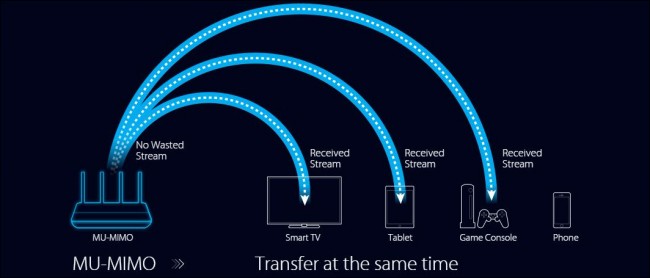MU - MIMO (multiuser, multiple input, multiple output) is the standard that evolved out of work with SU- MIMO and SDMA (Space Division Multiple Access). Most modern routers use “SU-MIMO”, or “Single User, Multiple-Input, Multiple-Output”.
With these routers, only one device can receive data at any given time. In contrast, single-user MIMO (SU- MIMO ) involves a single multi-antenna-equipped user or terminal. There are variations on.
MU - MIMO improves the performance of connections that are able to take advantage of it. MU - MIMO operates in the downstream direction (access point to client) and allows an access point to transmit to multiple client devices simultaneously. It is a technology for wireless communication.
The “multi-user“ part of the technology is what makes this different than before and why it’s a highlighted WiFi benefit. Multiple in, multiple out — pronounced "my-mo" and abbreviated as MIMO — is a method for the coordinated use of several radio antennas in wireless network communications.
The standard is common in home broadband routers. What is MU - MIMO ? WiFi standard enables MU - MIMO to support more clients than ever. For example, the RAX2communicates with multiple client devices simultaneously.
To get a rough idea, one needs to understand MIMO first. It means Performing MIMO for more than UEs simultaneously as illustrated below.

Multi-user MIMO allows multiple Wi-Fi devices to simultaneously receive multiple data streams. This is not a new concept. The traditional Wi-Fi routers with Single-User MIMO serve only one user at a time while other users that rely on that connection are forced to wait, which diminishes performance and overall capacity. For Beamforming to work, your router must have MIMO (multiple-input, multiple-output) antennas.
MIMO technology makes your router even faster by sending data through multiple antennas. The latest is MU - MIMO, which stands for multi-user, multiple-input, multiple-output. Released with the 802. It allowed the router to transmit at faster speeds by sending data through multiple antennas.
MU - MIMO is an acronym that stands for multi-user, multiple-input, multiple-output. You can think of MU - MIMO as a WiFi mediator, helping your router communicate with multiple devices simultaneously to drastically reduce wait times and speed up your network.

With Single User Multiple Input Multiple Output (SU- MIMO ), the AP is able to talk to only one client at a time. MU - MIMO or Multi User MIMO is a particular usage of the radio transmission technique called MIMO for Multiple Input Multiple Output.
MIMO is a trick where sets of antenna at transmitter and receiver ends of a radio link are used to build multiple parallel radio links and hence increase the overall system capacity. If you had several 4×MIMO devices connected to that router, they would all maintain a connection of four data streams at the same. Multiple-input multiple-output, or MIMO, is a range of technologies used to multiply the capacity of a wireless connection without requiring more spectrum.

Many modern technologies, from Wi-Fi to LTE, use MIMO techniques to achieve more capacity without more spectrum. SU-MIMO or rather MIMO, refers to a practical technique for sending and receiving more than one data signal simultaneously over the same radio channel by exploiting multipath propagation. However, we have seen drastic improvements in technology with the latest 802.
It works in GHz only. MU-MIMO : More about it. If it doesn’t, it soon will. Ready or not, this new Wi-Fi standard update is set to revolutionize the wireless networking world forever.
Let’s take a look at the technology and what makes it so cool for the average consumer. Devices now must wait a lot shorter of a time to get and send their packets, and overall creates a more efficient wireless network.
It provides significantly higher data throughput. Unlike MIMO, which sends a different spatial stream on each antenna, transmit beamforming sends the same stream on multiple antennas with deliberate timing offsets to increase range.
Please in a simple manner, my confusion is: SU- MIMO is like 2×MIMO today where a single beam covers a particular sector in telecom site and as per scheduler, resource blocks are shooted from antenn in form of analogue signals with a particular time lap (ms for 1RB).
Inga kommentarer:
Skicka en kommentar
Obs! Endast bloggmedlemmar kan kommentera.